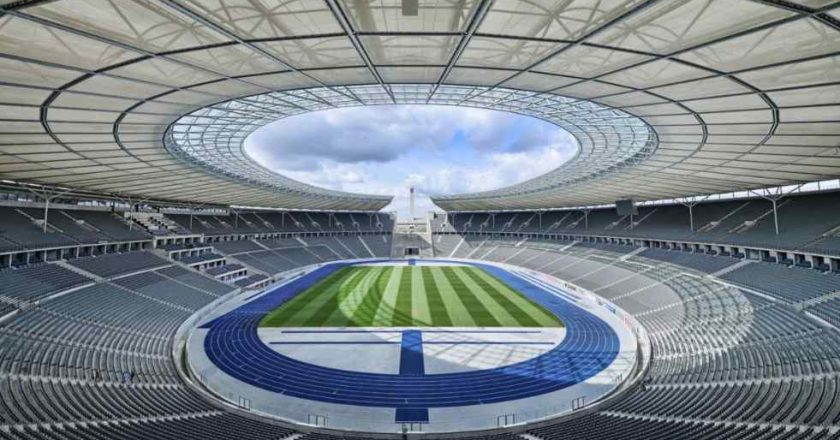This is the list of the top biggest football grounds in Germany. And this has got to measure over 50,000 in size.
Below, I have the table of the stadium ranking from 1 to 10 which includes capacity, where it is located, and the teams that make this pitch theirs.
Ranking | Stadium | Capacity | City | State | Team |
|---|---|---|---|---|---|
1 | Westfalenstadion | 81, 365 | Borussia Dortmund | North Rhine-Westphalia | Dortmund |
2 | Allianz Arena | 75, 024 | Munich | Bavaria | Bayern Munich |
3 | Olympiastadion Berlin | 74, 475 | Berlin | Berlin | Hertha BSC |
4 | Olympiastadion Munich | 63, 540 | Munich | Bavaria | Türkgücü Munich |
5 | Veltins-Arena | 62, 271 | Gelsenkirchen | North Rhine-Westphalia | FC Schalke 04 |
6 | MHPArena | 60, 469 | Stuttgart | Baden-Württemberg | Stuttgart |
7 | Volksparkstadion | 57, 030 | Hamburg | Hamburg | Hamburger SV |
8 | Merkur Spiel-Arena | 54, 600 | Düsseldorf | North Rhine-Westphalia | Fortuna Düsseldorf |
9 | Borussia-Park | 54, 022 | Mönchengladbach | North Rhine-Westphalia | Borussia Mönchengladbach |
10 | Deutsche Bank Park | 51, 500 | Frankfurt | Hesse | Eintracht Frankfurt |
Let’s dive right in.
READ ALSO: Top 10 Biggest Soccer Stadiums In Europe
1. Westfalenstadion
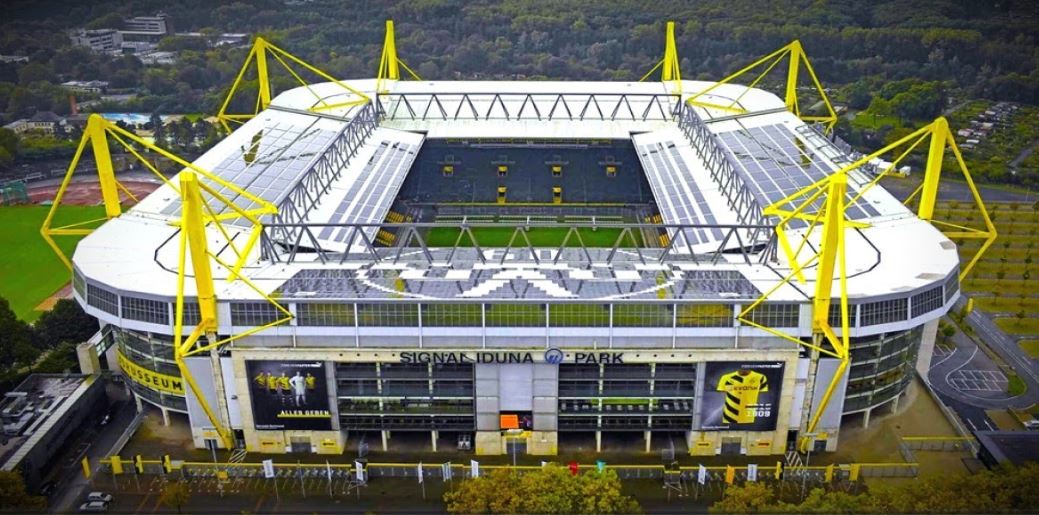
Westfalenstadion Stadium is the largest football ground in Germany, and you can find it in the city of Dortmund. You may have heard some call it Signal Iduna Park or BVB Stadion Dortmund, these are fancy names for different occasions.
The Westfalenstadion got its name from the old Prussian province of Westphalia. It’s one of the most famous football stadiums in Europe and is known for having an amazing atmosphere.
The stadium can contain a lot of fans, up to 81,365 people. And for international games, it can fit 65,829 supporters.
This stadium is also record-breaking. It’s the seventh-largest in Europe and the second-largest home to a top European club.
The Westfalenstadion holds the European record for having the most fans in the stands during a season. In one season, almost 1.37 million fans came to watch the games.
In addition, the stadium has a super park called the Südtribüne (South Bank). It can fit over 24,000 fans standing up, which is the biggest in all of European football.
This place is famous for its intense atmosphere, and people call it “The Yellow Wall.” If you want to learn about Borussia Dortmund’s history, you can visit the Borusseum, a museum right at the stadium.
It’s a great place to explore the team’s journey. Also, the Westfalenstadion has been part of some major moments. It hosted matches during the 1974 and 2006 FIFA World Cups.
Even hosted the 2001 UEFA Cup Final, plus, national games and matches for big European tournaments have taken place under its lights.
2. Allianz Arena
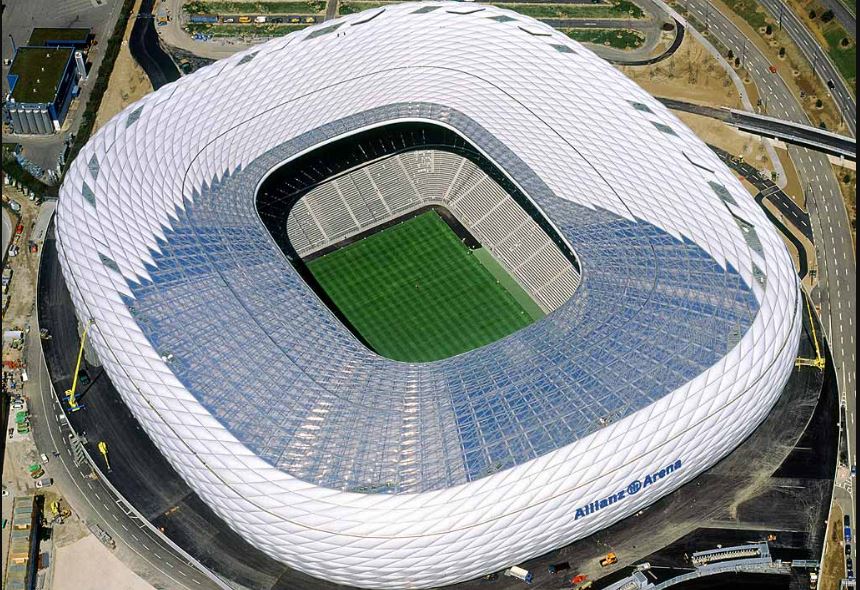
Allianz Arena stadium is designed to be versatile and accommodate a whole lot of fans and activities. This incredible ground can hold a massive crowd of 71,000 fans when it’s in full swing.
There are different tiers, the lower one can fit up to 20,000, the middle tier holds 24,000, and the upper tier seats 22,000 supporters.
Some of the seats in the lower tier corners can be turned into a standing room, making space for an additional 3,120 fans.
Also, It’s got 2,000 business seats for VIPs, 400 seats for the press to catch all the action, and even 106 luxury boxes where people can watch the game in style. Plus 165 spaces for wheelchairs and similar needs.
The arena has a cool roof that covers all the seats, but sometimes, the wind can still blow rain onto a few seats. The stadium is similar to a mini city with three-day-care centers for kids and a huge fan shop called the FC Bayern Munich Megastore.
You can find merchandise and food stands all around the stadium, so you won’t go hungry while cheering for your team. The stadium has space for players involved in the game.
There are locker rooms for the home teams, the opponents, the coaches, and the referees. Athletes even have areas to warm up before the action starts. And with 550 toilets and 190 monitors, everyone can be comfortable and stay updated.
Over the years, it expanded its capacity. In 2013, they added more tickets for fans in the Südkurve section.
Then, in 2014, they completed another expansion, raising the maximum capacity to 75,024 for Bundesliga matches and 69,334 for international games.
In 2015, another expansion was approved, aiming to increase the capacity to 75,000 for domestic games and 70,000 for Champions League matches.
READ ALSO: Top 10 Oldest Football Stadiums In The World
3. Olympiastadion ( Berlin )
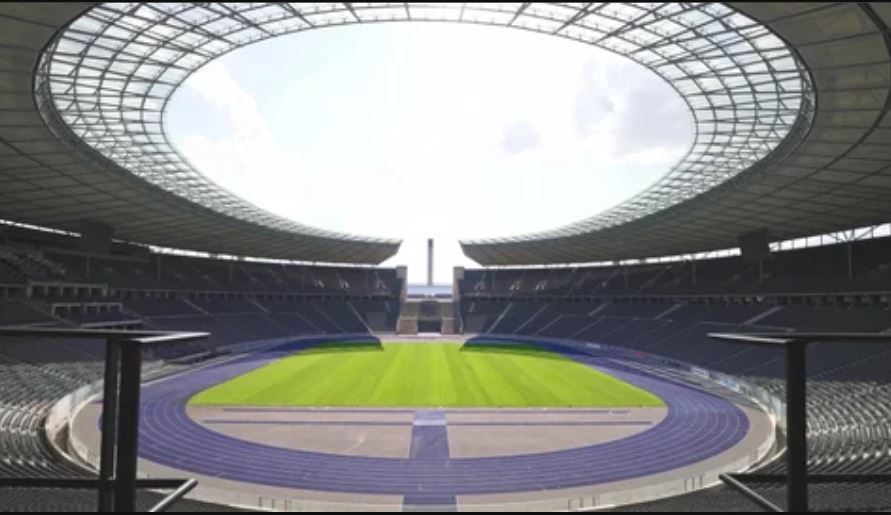
This stadium has seen some of the world’s biggest sporting clashes and is located in Olympiapark Berlin, Germany. Olympiastadion was built by architect Werner March for the 1936 Summer Olympics.
Back then, it could hold more than 100,000 fans. In 2004, the stadium underwent some renovations, which transformed it into the remarkable structure we see today.
Its current capacity stands at 74,475 seats, making it the largest stadium in Germany for international football matches.
Since 1963, it has been the home of Hertha BSC, and the stadium hosted matches during the 1974 FIFA World Cup and played a major role in the 2006 FIFA World Cup, including hosting the final match.
The Olympiastadion has continued to be a hub for major sporting events. It hosted the 2011 FIFA Women’s World Cup and the final of the 2015 UEFA Champions League.
The Olympiastadion is set to make history once again by hosting the UEFA Euro 2024 final along with five other games. The roots of the Olympiastadion can be traced back to the 1912 Summer Olympics.
While plans for a stadium were initially made for the canceled 1916 Summer Olympics, the vision started in the 1930s. It was originally planned to be located in Charlottenburg, but circumstances led to its current site.
Architect Werner March gave the Olympiastadion an interesting touch by building it partially underground. The lower half was recessed 12 meters (39.4 feet) below the ground level.
4. Olympiastadion Munich
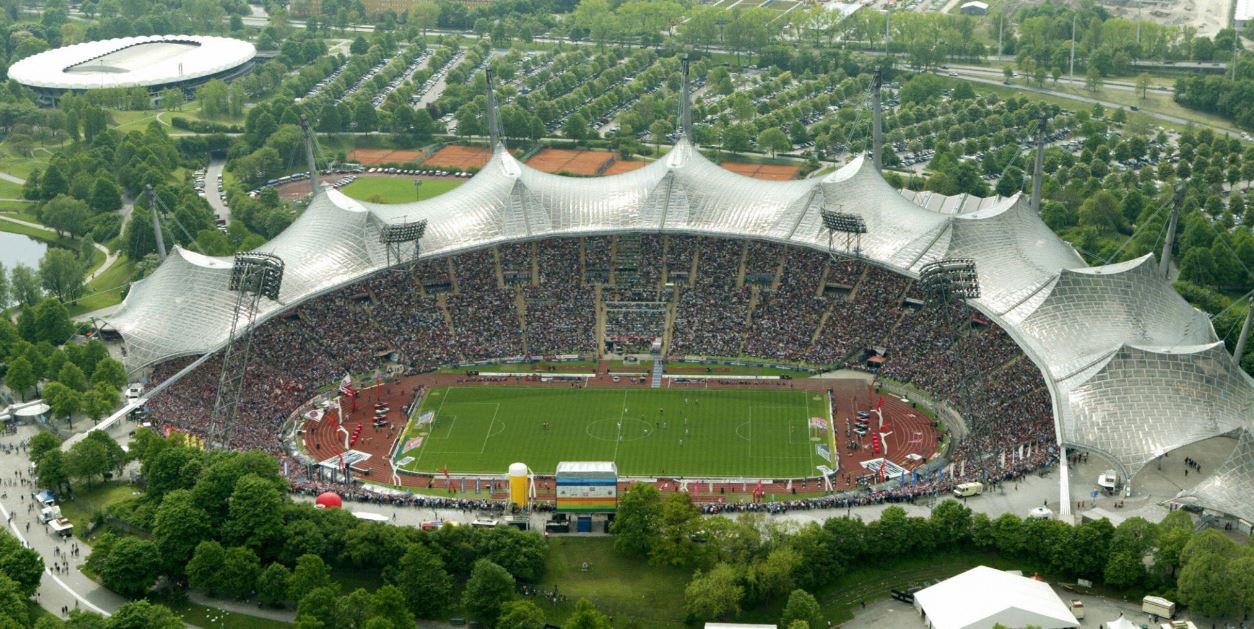
The Olympiastadion was the main venue for the 1972 Summer Olympics. Originally designed to hold around 75,000 seats during the Olympics, the stadium often saw daily fans reaching 80,000 to 90,000.
It hosts major football matches, including the 1974 FIFA World Cup Final and the UEFA Euro 1988 Final. This stadium was FC Bayern Munich and TSV 1860 Munich’s home until the construction of the purpose-built Allianz Arena for the 2006 FIFA World Cup.
The design of the Olympiastadion was created by German architect Günther Behnisch and engineer Frei Otto. It featured sweeping canopies made of acrylic glass supported by steel cables, a revolutionary concept that imitated the Alps skyline.
The journey to the Olympiastadion began after World War I, with Munich contemplating a large stadium due to the growing popularity of football.
Various attempts were made, including opening the Teutonia Platz and expanding the Grünwalder Stadion. After World War II, football’s popularity flooded.
The Grünwalder Stadion offered space for thousands, but as football’s popularity grew, Munich needed a larger arena.
In the early years of Nazi Germany, ambitious plans for a new stadium were discussed, but World War II intervened to halt the project. After the war, Munich’s football thrived once again.
Talks of a large stadium resurfaced, and in the 1960s, with the rise of top-tier football clubs like FC Bayern and TSV 1860, they needed a bigger venue.
READ ALSO: Top 10 Biggest Football Stadiums In The United Kingdom
5. Arena Auf Schalke
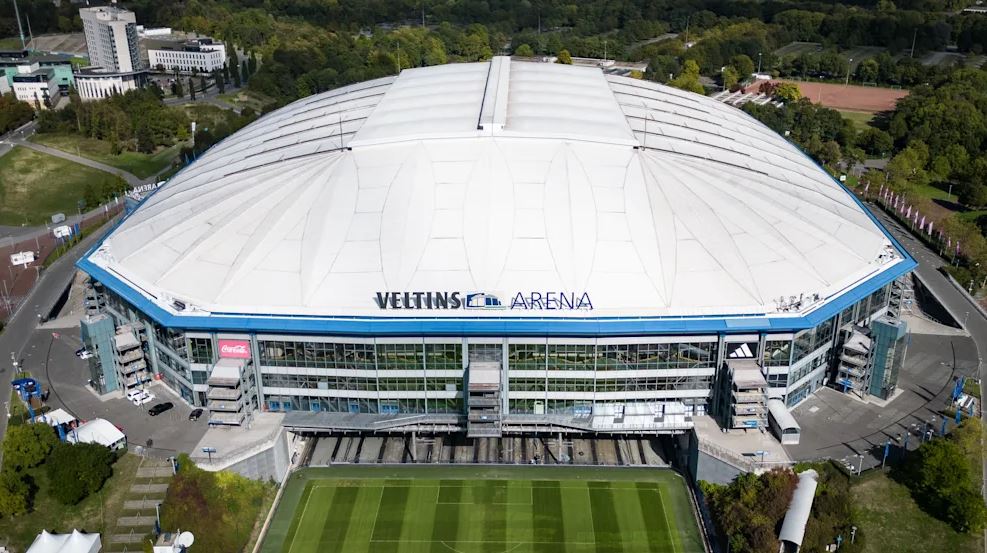
Arena Auf Schalke is a superb indoor football stadium in Gelsenkirchen, North Rhine-Westphalia, Germany. It is also known as the Veltins-Arena for sponsorship reasons, this iconic venue is more than just a stadium.
The Arena Auf Schalke, now Veltins-Arena, opened its doors on 13 August 2001, becoming the new home for the Bundesliga club FC Schalke 04.
This arena has witnessed great moments, including hosting the 2004 UEFA Champions League Final and being one of the venues for the 2006 FIFA World Cup, hosting five matches, including a quarter-final.
We will also see this ground host four matches at the Euro 2024. The Veltins-Arena is a two-tiered, multi-functional arena that surrounds the playing field.
With a league capacity of 62,271 and 54,740 for international matches, the stadium boasts a retractable roof and a retractable pitch.
The stadium’s naming rights were acquired by German brewery Veltins on 1 July 2005 though the journey towards the Veltins-Arena started in the late 1990s when plans for a new stadium emerged, aiming to replace the outdated Parkstadion.
The goal was to create a modern multifunctional arena that resonated with both fans and players. The Veltins-Arena foundation was built using cast concrete and packed slag, supporting pre-fabricated, reinforced concrete stands.
Ventilation tunnels integrated into the arena’s corners functioned for both construction and airflow purposes. The retractable roof, coated with Teflon-coated fiberglass canvas, covers the entire stadium.
It can be opened or closed based on weather and event requirements.
6. MHPArena
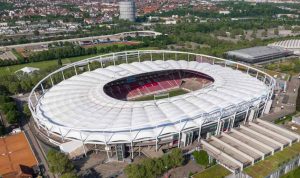
MHPArena has been a witness to time, transformation, and triumphs, being the home Bundesliga club, VfB Stuttgart. Before 1993, it was known as the Neckarstadion, named after the nearby Neckar River.
And from 1993 to July 2008, it was called Gottlieb-Daimler-Stadion, and from the 2008–09 season onwards, it became the Mercedes-Benz Arena. Most recently, on 1 July 2023, the stadium got its new name the MHPArena.
MHPArena was originally designed by German architect Paul Bonatz, and It has gone through various phases, from being named the “Adolf-Hitler-Kampfbahn” to being the venue for US Troops to play baseball after World War II.
The MHPArena’s unique fabric roof construction is an amazing difference from the stadiums in this list. This roof can withstand considerable weight and is suspended from a striking steel frame weighing around 2,700 metric tons.
The MHPArena has been host to several historic international matches, including the 1974 FIFA World Cup, the 1988 UEFA European Football Championship, and the 2006 FIFA World Cup. It also hosted the European Cup finals in 1959 and 1988.
7. Volksparkstadion
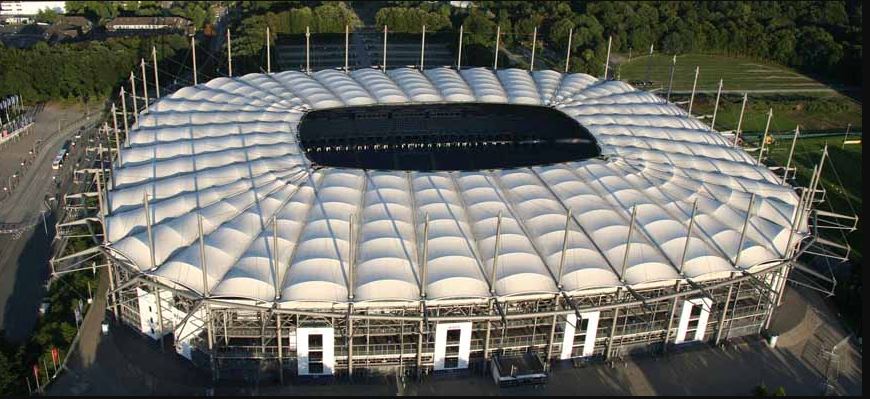
This stadium is home to Hamburger SV (HSV), and it has undergone multiple name changes and renovations. Despite its modern originality, the roots of the Volksparkstadion are interwoven with history and evolution.
HSV wasn’t initially connected to the stadium’s origins, but before finding its current area, they played at Sportplatz at Rothenbaum.
The stadium transformed in 1951 and 1953, emerging as the Volksparkstadion. Named after its location at Altona Volkspark (People’s Park), this new iteration of the stadium became a place of sporting events.
In 1963, HSV adopted the Volksparkstadion as its home, and the club began its domination in the Bundesliga, winning titles in 1979, 1982, and 1983.
The need for modernization led to the demolition of the old Volksparkstadion in 1998 and also aligned with Germany’s preparations for hosting the Football World Cup.
It has a capacity of 57,000 during club matches, expandable to 51,500 for international matches. The inauguration of the new stadium in 2000 was a new era for HSV.
With a rejuvenated space and modern facilities, the club was able to achieve an average attendance of 50,000. The stadium also houses a museum dedicated to the history of HSV.
Also, the Volksparkstadion has seen iconic tournaments, including the 1974 FIFA World Cup, UEFA Euro 1988, and the 2006 FIFA World Cup
8. Merkur Spiel-Arena
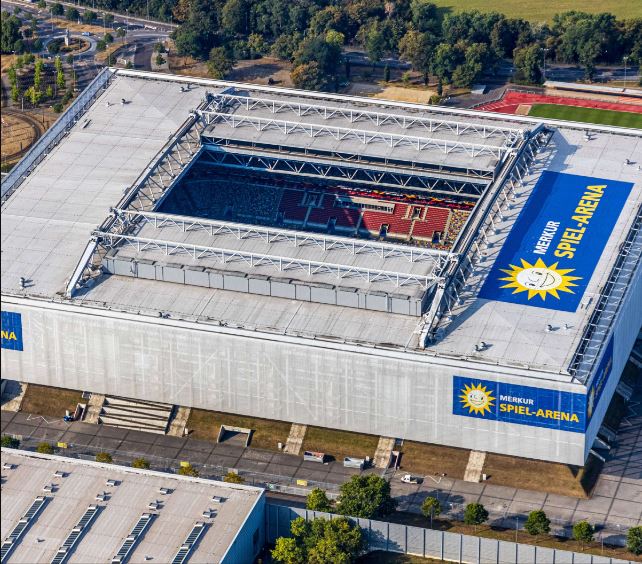
Merkur Spiel-Arena is a multi-functional football stadium formerly known as Esprit Arena, LTU Arena, and Düsseldorf Arena. The stadium replaced the Rheinstadion, and its capacity of 51,500 expanded in 2010 with standing terraces.
Today, it’s Fortuna Düsseldorf home. While it missed the 2006 FIFA World Cup, the arena has hosted many international matches. Notable games include Germany vs. Argentina (2-2), Germany vs. Switzerland (3-1), and Germany vs. Norway (0-1).
Apart from football, the stadium hosted World Bowl XIII and XIV. The arena has also witnessed boxing matches, from Wladimir Klitschko’s triumphs to heavyweight bouts. In 2021, it hosted the Championship Game of the European League of Football.
The Merkur Spiel Arena will also host the 2025 Summer World University Games’ ceremonies and various sports events.
READ ALSO: All MLS Stadiums Ranked From Largest To Smallest
9. Borussia Park
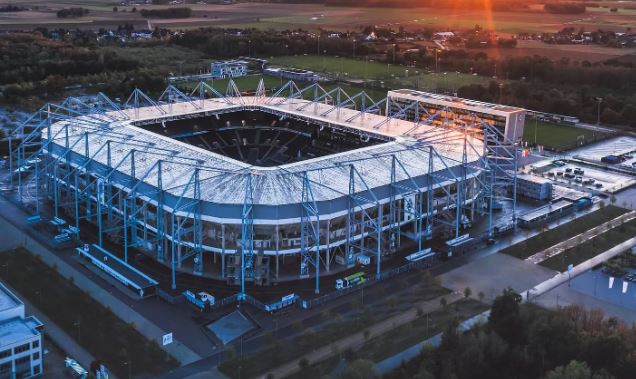
Borussia Park has a capacity of 54,057, and 16,145 standing terraces. During international encounters, these terraces transform into temporary seating, accommodating 46,249 supporters.
Borussia Park offers a wealth of amenities. VIP lounges, a fan shop, and a lively sports bar create an immersive experience for fans. According to a report, it was constructed for 85 million euros.
Despite its brilliance, Borussia-Park missed out on hosting matches during the 2006 World Cup hosted by Germany. Nonetheless, it was host to the 2011 Women’s World Cup, and it wasn’t selected as a venue for Germany’s UEFA EURO 2024 bid.
Borussia Park has an impressive average occupancy rate of 95.1%, it ranks as one of Europe’s most visited football stadiums. In 2017, it secured the 13th spot between Liverpool F.C. and Hamburger SV.
10. Waldstadion
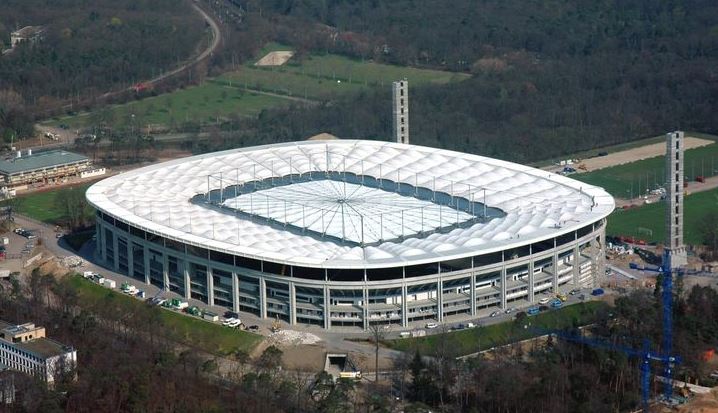
Waldstadion is a retractable roof football stadium and it’s Eintracht Frankfurt’s home since 1963. With a capacity of 51,500 for league matches and 48,500 for American football and international encounters, it ranks among Germany’s largest football arenas.
Its history led to its redevelopment as a football venue in preparation for the 2005 FIFA Confederations Cup and 2006 FIFA World Cup. The stadium boasts its railway station, Frankfurt Stadion, on the national rail network.
Waldstadion hosted four matches, including the final of the 2011 FIFA Women’s World Cup. Moreover, it’s set to host two regular-season National Football League (NFL) American football games as part of the NFL Germany Games in 2023.
The stadium features included grandstands made of earthworks, with a facade inspired by ancient Greek theater architecture.
Over the years, it witnessed expansions, the introduction of the Bundesliga, and even the World Championships in track cycling in 1966.
READ ALSO: 10 Best Stadiums in Major League Soccer
It then experienced major reconstructions, particularly for the 1974 FIFA World Cup. In 2005, the new arena was designed for football and other turf sports and was unveiled during the FIFA Confederations Cup.
Waldstadion also welcomes the American football teams and the Turkish Football Federation. It was the NFL Europa’s Frankfurt Galaxy home and even hosted ice hockey games.
And the stadium is ready to host NFL regular season games in 2023 and 2025. The NFL’s International Series will feature exciting matches.

Kenneth is a an avid soccer follower, fan and writer. He is a consistent follower of the sport and is a fan of Chelsea FC.

